Tribe Sicyeae Rank Genus | Subtribe Cyclantherinae Higher classification Cucurbits | |
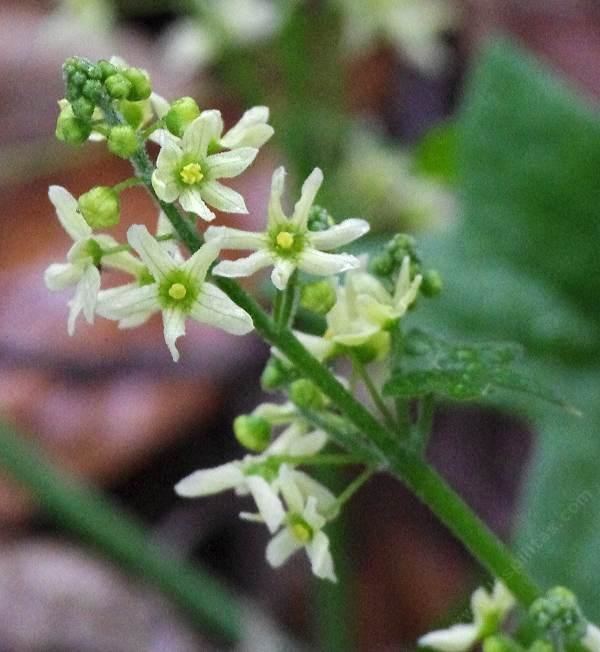 | ||
Lower classifications | ||
Marah (the manroots, wild cucumbers, or cucumber gourds) are flowering plants in the gourd family (Cucurbitaceae), native to western North America. They are also commonly called Old man in the ground. The genus (which Kellogg noted was characterized by extreme bitterness) was named for Marah in Exodus 15:22-25, which was said to be named for the bitter water there.
Contents
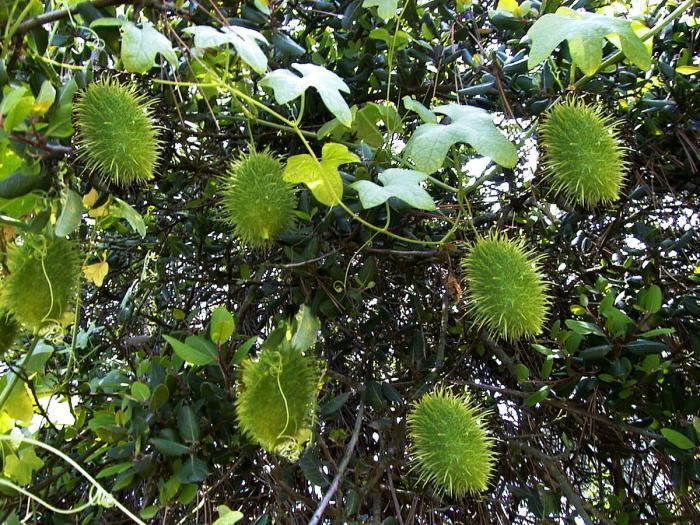
Except for the isolated range of Marah gilensis (Gila manroot) in west-central Arizona and island populations (M. macrocarpus var. major), all manroot species inhabit overlapping ranges distributed from Southern Canada to Northern Mexico. Although Marah oreganus (coastal manroot) extends inland into Idaho, all other manroot species except M. gilensis are confined to areas within 300 km of the Pacific Ocean coast.
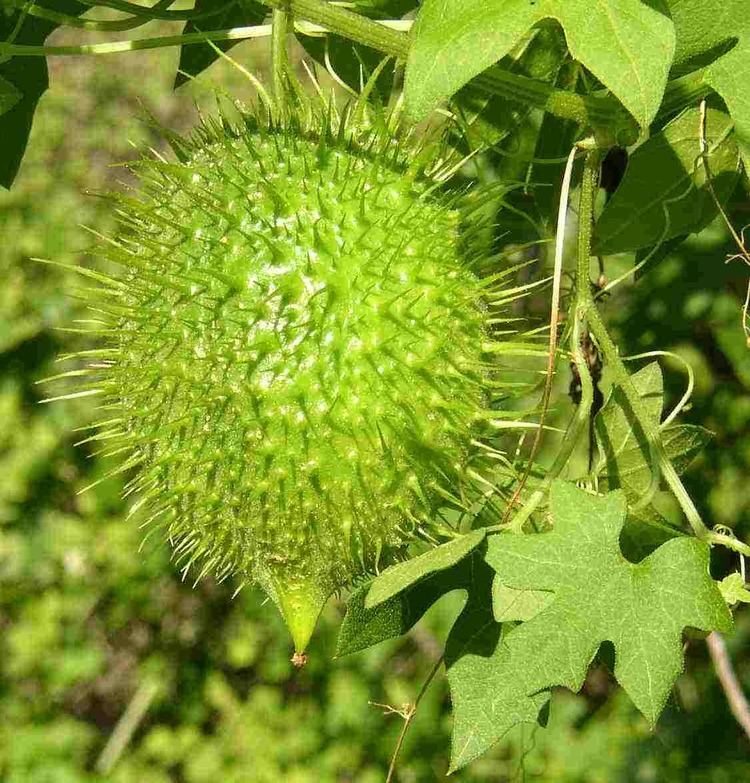
Description

The manroots are perennial plants, growing from a large tuberous root. Most have stout, scabrous or hairy stems, with coiling tendrils that enable them to climb up other plants; they can also grow rapidly across level ground. Their leaves tend to have multiple lobes, up to 7 in some species. The fruits are striking and easily recognised. They are large, and spherical, oval or cylindrical. At a minimum they are 3 cm (1.2 in) in diameter, but can be up to 20 cm (8 in) long, and in many species they are covered in long spines. Both leaf and fruit shape vary widely between individual plants and leaves can be particularly variable even on the same vine.
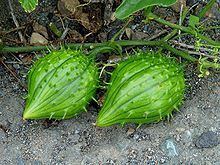
The anthropomorphic common names "manroot" and "old man" derive from the swollen lobes and arm-like extensions of the unearthed tuber. On old plants, the tuber can be several meters long and weigh in excess of 100 kg (220 lb).
Taxonomy and systematics
Marah species hybridize freely where ranges overlap and this, in addition to intra-species leaf and fruit variability, makes definite identification of specimens a particular challenge.
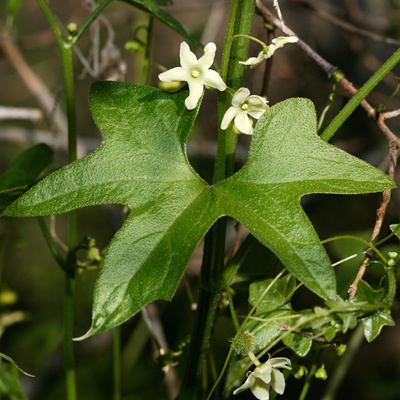
A proper genetic analysis of Marah phylogeny has not yet been undertaken. The standard taxonomy has been based on morphological comparisons and geographic considerations.
Some authors include the manroots in genus Echinocystis. Considered as a separate genus, however, it includes six or seven species, some of them with well-defined varieties within them:
Use by humans
Marah oreganus was used medicinally by Native Americans. The Chinook made a poultice from the gourd. The Squaxin mashed the upper stalk in water to dip aching hands. The Chehalis burned the root and mixed the resulting powder with bear grease to apply to scrofula sores. The Coast Salish made a decoction to treat venereal disease, kidney trouble and scrofula sores.
The dried spiky fruit can be soaked in water so that the spikes can be easily removed. They are difficult to remove otherwise. The hard fruit becomes soft in water and once the spikes are gone, the fruit makes a very efficient loofa. The tubers of M. fabaceus and M. macrocarpus contain saponins which can act as a natural soap.
Tubers of M. fabaceus were crushed and thrown into bodies of water by the Kumeyaay to immobilize fish. The tubers contain megharrhin, a saponin-like glucoside. Saponins lower the surface tension of water allowing the formation of bubbles. It is likely that the substance enters the fish's circulation through the gill arches where only a single-cell epithelium separates the water from the animal’s red blood cells. The affected fish float to the surface.
Like many medicinal plants, at least some Marah species are toxic if ingested and deaths have been reported from ingesting them.
Seeds of Marah fabaceus have been reported as being hallucinogenic.
